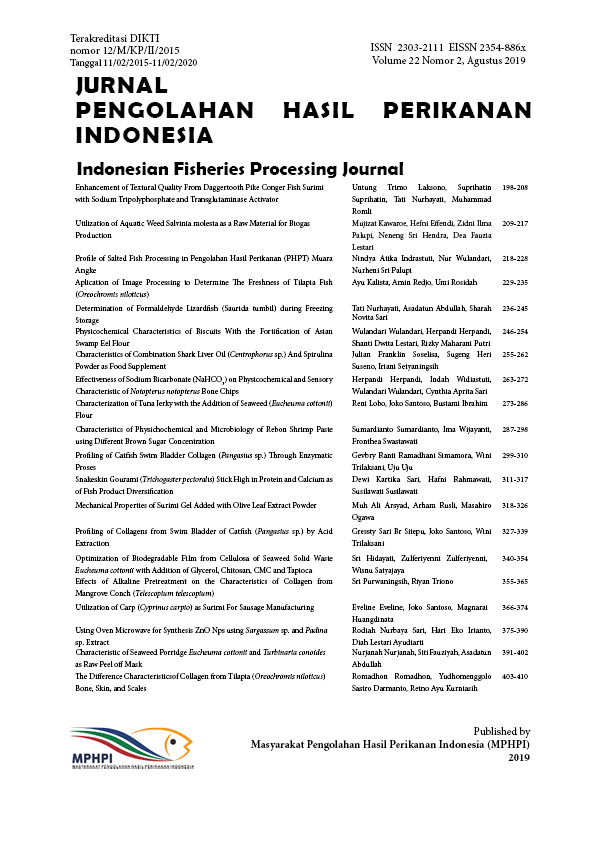Optimization of Biodegradable Film from Cellulosa of Seaweed Solid Waste Eucheuma cottonii with Addition of Glycerol, Chitosan, CMC and Tapioca
Abstract
Cellulose from the solid waste of seaweed Eucheuma cottonii is one of the wastes that can be used as raw material for making biodegradable films. The condition for making optimum conditions for making biodegradable film from E. cottonii with treatment of glycerol concentration (0; 0,25; 0,5; 0,75; and 1%), tapioca concentration (2; 4; 6; 8; and 10%) , carboxy methyl cellulose (CMC) concentration (1; 2; 3; 4and 5%) and chitosan concentration (1; 2; 3; 4; and 5 The experimental design uses a surface response method with 4 replications. The analysis carried out consisted of elongation percent, tensile strength, solubility and biodegradable film using surface response method. The optimum value occurs in the process conditions using a concentration of glycerol of 0.162%, tapioca concentration of 3.78%, CMC concentration of 2.5% and chitosan concentration of 1.62% with tensile strength 95.013 Mpa, percent elongation of 8.92%, and solubility 80.62%.
Authors

This work is licensed under a Creative Commons Attribution 4.0 International License.
Authors who publish with this journal agree to the following terms:
- Authors retain copyright and grant the journal right of first publication with the work simultaneously licensed under a Creative Commons Attribution License that allows others to share the work with an acknowledgement of the work's authorship and initial publication in this journal.
- Authors are able to enter into separate, additional contractual arrangements for the non-exclusive distribution of the journal's published version of the work (e.g., post it to an institutional repository or publish it in a book), with an acknowledgement of its initial publication in this journal.





